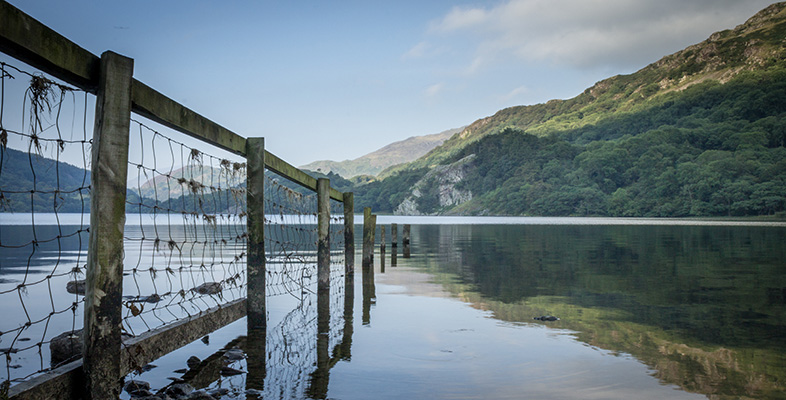7.4 The remaking of Wales in the eighteenth century
Image 1: Sir Watkin Williams Wynn: a portrait by Thomas Hudson, 1740. (Source: National Museum of Wales.)
From: The remaking of Wales in the eighteenth century
Image 2: Pembroke town and castle, painted by Richard Wilson. (Source: National Museum of Wales.)
From: The remaking of Wales in the eighteenth century
Image 3: Mid-eighteenth-century wine glasses engraved with Jacobite insignia and mottoes. (Source: National Museum of Wales.)
From: The remaking of Wales in the eighteenth century
Image 4: Richard Jones Gwynne of Taliaris, Sea Serjeant. (Source: National Museum of Wales.)
From: The remaking of Wales in the eighteenth century
Image 5: The Calvinistic Methodist Fathers. (Source: National Library of Wales.)
From: The remaking of Wales in the eighteenth century
Image 6: The Welch Curate. (Source: British Museum.)
From: The remaking of Wales in the eighteenth century
Image 7: The Welch Parson. (Source: British Museum.)
From: The remaking of Wales in the eighteenth century
Image 8: Lewis Morris. (Source: National Museum of Wales.)
From: The remaking of Wales in the eighteenth century
Image 9: Howel Harris’s map of his travels. (Source: National Library of Wales and the Historical Society of the Presbyterian Church of Wales.)
From: The remaking of Wales in the eighteenth century
Image 10: Title page of John Evans’s Some Account of the Welch Charity Schools. (Source: National Library of Wales.)
From: The remaking of Wales in the eighteenth century
Image 11: Griffith Jones’s tables of schools and scholars in Welch Piety, 1759. (Source: National Library of Wales.)
From: The remaking of Wales in the eighteenth century
Image 12: A cartoon of 1763 portraying preachers as greedy men and their congregations as lewd and disorderly. (Source: British Museum.)
From: The remaking of Wales in the eighteenth century
Image 13: The First Methodist Association (Sasiwn) in 1743. (Source: National library of Wales.)
From: The remaking of Wales in the eighteenth century
Image 14: Engraving showing an iron forge between Dolgellau and Barmouth, 1776. (Source: National Library of Wales.)
From: The remaking of Wales in the eighteenth century
Image 15: Coal staithe and a copper works at Landore, near Swansea, 1792, a watercolour by J.C. Ibbetson. (Source: The Wernber Collection, Luton.)
From: The remaking of Wales in the eighteenth century
Image 16: Token coin of the ironworks of Carmarthen and Cwmdwyfran in the late eighteenth century, showing the tapping of the furnace and the forging into bar iron. (Source: Carmarthen Museum.)
From: The remaking of Wales in the eighteenth century
Image 17: The Parys Copper Mine, Anglesey, c. 1785, a watercolour by J.C. Ibbetson. (Source: National Museum of Wales.)
From: The remaking of Wales in the eighteenth century
Image 18: Penrhyn Slate Quarry in 1808. (Source: Gwynedd Archives Service.)
From: The remaking of Wales in the eighteenth century
Image 19: The Darren Lead Mine, Cardiganshire, c.1670. (Source: Welsh Industrial and Maritime Museum.)
From: The remaking of Wales in the eighteenth century
Image 20: Copper works in the Greenfield Valley, near Holywell, Flintshire, 1792. (Source: Clwyd Record Office.)
From: The remaking of Wales in the eighteenth century
Image 21: The White Rock Copper and Brass Works, near Swansea, in 1744
From: The remaking of Wales in the eighteenth century
Image 22: Title page of Cylchgrawn Cymraeg (Source: National Library of Wales.)
From: The remaking of Wales in the eighteenth century
Image 23: Title page of Seren tan Gwmmwl (Source: National Library of Wales.)
From: The remaking of Wales in the eighteenth century
Image 24: Title page of Toriad y Dydd (Source: National Library of Wales.)
From: The remaking of Wales in the eighteenth century
Image 25: A memento of Fishguard in 1797
From: The remaking of Wales in the eighteenth century
Image 26: Edward Williams (Iolo Morganwg). (Source: National Library of Wales.)
From: The remaking of Wales in the eighteenth century
Image 27: Portrait of Lady Llanover (1802–96) painted by Mornewicke in 1862. (Source: National Museum of Wales.)
From: The remaking of Wales in the eighteenth century
Image 28: An Arch Druid in His judicial Habit, a coloured aquatint from S.R. Meyrick and C.H. Smith, The Costume of the Original Inhabitants of the British Islands, 1815. (Source: BBC Button Picture Library.)
From: The remaking of Wales in the eighteenth century
Image 29: The druidic priest as portrayed by the Revd Henry Rowlands in his Mona Antiqua Restaurata, 1723
From: The remaking of Wales in the eighteenth century
Image 30: The Bard by Philippe J. de Loutherbourg, published in 1784 as the frontispiece to Musical and Poetical Relicks of the Welsh Bards by Edward Jones.
From: The remaking of Wales in the eighteenth century
Image 31: Druidical Remains in Anglesey, an engraving by J.Smith in William Sotheby’s A Tour Through Parts of Wales, 1794
From: The remaking of Wales in the eighteenth century
Use the link below to download all the images from The remaking of Wales in the eighteenth century as a collection.
From: The remaking of Wales in the eighteenth century
